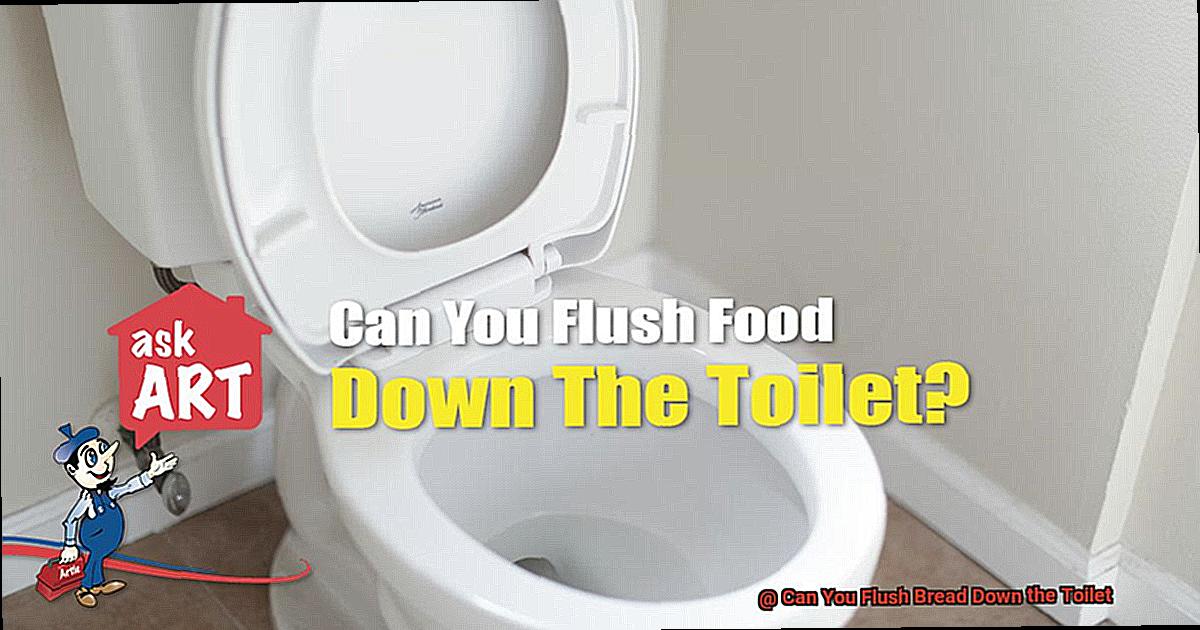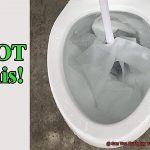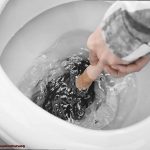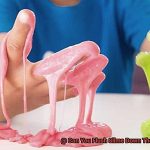Picture this: you’re standing in your kitchen, staring at a lone piece of bread that you have no idea what to do with. You consider flushing it down the toilet – after all, it’s just organic matter, right? But before you make any hasty decisions, let’s explore whether or not flushing bread down the toilet is actually a good idea.
In this blog post, we’ll take a deep dive into the world of bread and plumbing to answer the age-old question: can you flush bread down the toilet? We’ll start by examining what happens when any type of food is flushed down the toilet and why it’s generally not recommended. Then we’ll get into the nitty-gritty details about how bread can affect your plumbing system.
But why would anyone even consider flushing their bread down the toilet in the first place? We’ll discuss some of the reasons behind this behavior, including avoiding food waste and convenience. And fear not – we won’t leave you hanging without a solution. We’ll provide tips on how to properly dispose of your leftover bread and other food waste without clogging up your pipes, such as composting or using a food waste disposer.
Whether you’re a homeowner looking to avoid costly plumbing repairs or simply someone who wants to do their part in reducing food waste, this blog post has got you covered.
So, let’s find out.
Contents
- 1 What Happens When You Flush Bread Down the Toilet?
- 2 Potential Plumbing Problems Caused by Flushing Bread Down the Toilet
- 3 Environmental Impact of Flushing Bread Down the Toilet
- 4 How to Dispose of Bread Properly
- 5 Common Misconceptions about Flushing Bread Down the Toilet
- 6 Tips for Preventing Clogs and Blockages in Your Pipes
- 7 Conclusion
What Happens When You Flush Bread Down the Toilet?
We get it, it seems like a convenient way to dispose of excess food. However, we’re here to warn you that this seemingly harmless action can actually cause serious damage to your plumbing system and the environment.
Bread is made up of starches and fibers that do not break down easily in water. As a result, when you flush bread down the toilet, it can quickly absorb water and swell up, causing it to become stuck in your pipes.
This can lead to blockages and clogs that prevent other waste from properly flowing through the system. Over time, this buildup can cause your toilet to back up, leading to costly plumbing repairs.
But wait, there’s more. Flushing bread down the toilet can also harm the environment. When bread ends up in the sewer system, it can cause issues at wastewater treatment plants. These facilities are designed to break down organic materials, but bread does not break down easily. This can lead to excess waste and pollution in our waterways.
So what’s the solution? The best course of action is to dispose of leftover bread in the trash or compost it if possible.
By doing so, you can avoid costly plumbing repairs and help protect the environment.
Potential Plumbing Problems Caused by Flushing Bread Down the Toilet
Flushing bread down the toilet can cause serious plumbing issues and harm the environment in several ways.
The first issue is clogging. Unlike toilet paper, bread is not easily broken down and can quickly become stuck in your pipes. This blockage can cause water to back up into your toilet or other drains in your home, leading to costly repairs. Don’t let a simple mistake turn into an expensive problem.
Another problem is damage to your septic system. If you have a septic tank, flushing bread down the toilet can fill it up faster than normal. Bread doesn’t break down like other waste and takes up valuable space in your septic tank. This can cause overflow and damage to the tank. Prevent these problems by disposing of bread properly.
Flushing bread down the toilet can also attract pests such as rats and insects. These pests are drawn to the food source and may enter your home through damaged pipes or other openings in your plumbing system. Don’t invite unwelcome guests into your home.
Lastly, flushing bread down the toilet harms the environment. Bread is not biodegradable and can harm wildlife if it ends up in local waterways or oceans. As responsible citizens, we must dispose of our waste correctly to protect our planet.
Environmental Impact of Flushing Bread Down the Toilet
While it may seem like a convenient solution, it can have serious environmental impacts that harm our planet and aquatic life.
When bread mixes with water, it forms a thick and sticky substance that can clog pipes and cause blockages in sewer systems. This can lead to sewage backups, creating not only unpleasant sights and smells but also posing significant health risks.
Moreover, flushing bread down the toilet contributes to water pollution. The carbohydrates in bread break down into simple sugars, increasing the organic matter in wastewater. This leads to bacterial growth that depletes oxygen levels in water bodies and endangers aquatic life.
In addition, flushing bread can contribute to greenhouse gas emissions. When bread blocks pipes and sewer systems, wastewater treatment plants work inefficiently, leading to higher energy consumption and increased carbon emissions. When wastewater is not treated correctly due to blockages caused by bread, harmful gases like methane and carbon dioxide can be released into the atmosphere.
To protect our environment and prevent potential health hazards, we must dispose of food waste properly by composting or throwing it in the trash. Remember that toilets are designed to handle human waste and toilet paper only.
How to Dispose of Bread Properly
When it comes to disposing of bread, it’s important to remember that flushing it down the toilet is not an option. Not only can it cause blockages in pipes and sewers, but it can also harm the environment. Luckily, there are several proper ways to dispose of bread that are both easy and eco-friendly.
Composting Bread
Composting is one of the best ways to dispose of bread. By adding bread to your compost pile, you’re providing nitrogen that helps break down other organic materials faster. Simply tear the bread into small pieces and add it to your compost bin or pile. Remember to mix in carbon-rich materials like leaves or newspaper to balance out the nitrogen.
Feeding Birds
If you have stale or leftover bread, consider feeding it to birds instead of throwing it away. Many birds enjoy eating bread, and it provides them with much-needed nutrition. You can break the bread up into small pieces and put it out in a bird feeder or on a bird table. Just be careful not to put out too much at once, as this can attract pests like rodents.
Using a Garbage Disposal
If you have a garbage disposal, you can also dispose of small amounts of bread by running it through with plenty of water. However, be cautious not to overload the disposal with too much bread at once as this can also cause blockages. Make sure to run plenty of water before and after putting bread through the disposal to help break it down properly.
Subtopic 4: Wrapping in Paper Towel or Newspaper
If none of the above options work for you, simply wrap the bread in a paper towel or newspaper before throwing it away in your regular trash bin. This prevents the bread from sticking to other trash items and creating a mess. While not the most environmentally friendly option, it is still better than flushing bread down the toilet.
Reduce Food Waste
Lastly, it’s important to remember that reducing food waste is the best way to minimize the amount of bread you need to dispose of in the first place. Try buying smaller loaves or freezing leftover bread for future use. You can also repurpose stale bread by making croutons or breadcrumbs for recipes.
Common Misconceptions about Flushing Bread Down the Toilet
However, this is a common misconception that can lead to serious plumbing problems and harm the environment. In this blog post, we’ll debunk some of the most common misconceptions about flushing bread down the toilet and provide you with alternative disposal methods.
One of the biggest misconceptions is that bread is biodegradable, so it won’t cause any issues if flushed down the toilet. While bread will eventually break down, it can cause serious clogs in your plumbing and sewage systems in the meantime. When bread gets stuck in pipes, it prevents water from flowing properly and can lead to backups and overflows. This can be both messy and expensive to clean up.
Another common myth is that bacteria in septic systems or wastewater treatment plants will quickly break down bread. While these systems are designed to break down organic matter, they can’t handle large amounts of food waste like bread. Overloading these systems with excess food waste disrupts their natural balance and can lead to costly repairs.
Lastly, some people may believe that flushing bread is more environmentally-friendly than throwing it away in the trash. However, this is also a misconception. Flushing bread wastes water and energy resources, and can also harm the environment by contributing to pollution and contaminating natural water sources.
So what should you do with your leftover bread instead of flushing it down the toilet? There are several alternatives that are much more environmentally friendly, such as composting, feeding birds or other animals, using a garbage disposal in moderation, wrapping it in paper towel or newspaper before disposing of it in the trash, or simply reducing food waste by buying smaller loaves or repurposing stale bread.
Tips for Preventing Clogs and Blockages in Your Pipes
Fortunately, there are several simple yet effective tips that you can follow to prevent these frustrating plumbing issues. Here are five subtopics that will guide you through preventing clogs and blockages in your pipes.
Mindful Flushing
Flushing the wrong items down your toilet is one of the most common causes of clogs and blockages. Be mindful of what you flush down your toilet and avoid flushing non-degradable items, such as wipes, feminine hygiene products, and even bread. These items can quickly expand and become bulky when they come into contact with water, leading to a clog. Instead, dispose of these items in the trash can.
No Grease or Oil Down the Drain
Avoid dumping grease or oil down your drains as they can solidify and cause blockages in your pipes once they cool. Instead, pour grease and oil into a container and dispose of it in the trash once it has solidified.
Regular Maintenance
Regular maintenance is crucial for preventing clogs and blockages. Have your pipes inspected and cleaned by a professional plumber on a regular basis. This will help catch any potential problems before they turn into costly repairs.
Additionally, using a drain strainer or screen can help prevent food scraps, hair, and other debris from going down your drains and causing clogs.
Natural Cleaning Solutions
Regularly cleaning out your drains with a homemade solution of vinegar and baking soda can also help keep them clear and free of buildup. Pour one cup of baking soda down the drain followed by one cup of vinegar.
Let the mixture sit for a few minutes before flushing with hot water. This natural solution helps break down any buildup in your pipes.
Proper Disposal
Proper disposal is key to preventing clogs and blockages in your pipes. Dispose of non-degradable items like wipes and feminine hygiene products in the trash can. Avoid flushing anything that is not meant to be flushed down the toilet.
By following these tips, you can prevent clogs and blockages in your pipes, which will save you time, money, and headaches in the long run.
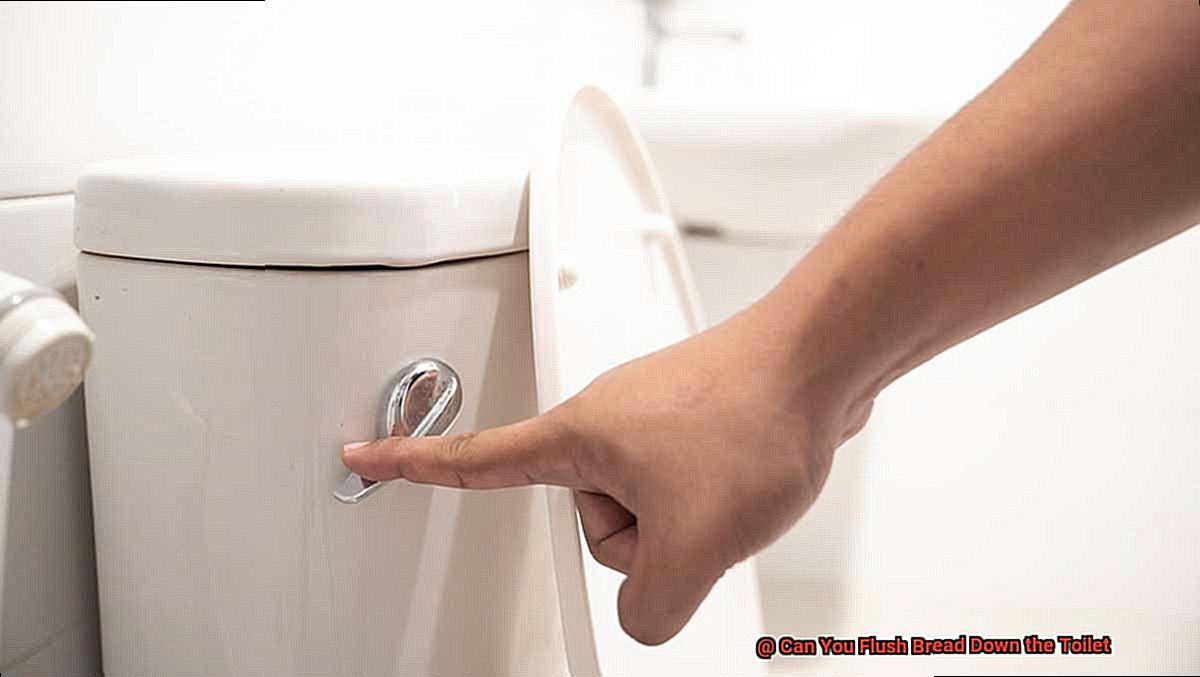
Remember to be mindful of what you flush down your toilet, avoid dumping grease or oil down your drains, schedule regular maintenance, use natural cleaning solutions, and dispose of items properly.
0qOljXNeVnc” >
Conclusion
In conclusion, flushing bread down the toilet is a recipe for disaster. The starchy and fibrous composition of bread makes it difficult to break down in water, leading to clogs and blockages that can result in costly plumbing repairs. Not only that, but flushing bread down the toilet can also have negative impacts on the environment by causing issues at wastewater treatment plants and contributing to water pollution.
But don’t fret. There are plenty of proper ways to dispose of leftover bread that are both easy and eco-friendly. Whether you choose to compost it, feed it to birds or other animals, use a garbage disposal in moderation, wrap it in paper towel or newspaper before tossing it in the trash, or simply reduce food waste by buying smaller loaves or repurposing stale bread, there’s an option for everyone.
It’s crucial to keep in mind that toilets are designed for human waste and toilet paper exclusively. Flushing non-degradable items like wipes and feminine hygiene products can cause serious plumbing problems as well.
By following some simple tips such as being mindful of what you flush down your toilet, avoiding dumping grease or oil down your drains, scheduling regular maintenance checks, using natural cleaning solutions, and disposing of items properly, you can prevent clogs and blockages in your pipes which will save you time, money, and headaches in the long run.
Remember that small actions like properly disposing of leftover bread can make a significant impact on preserving our environment for future generations.

